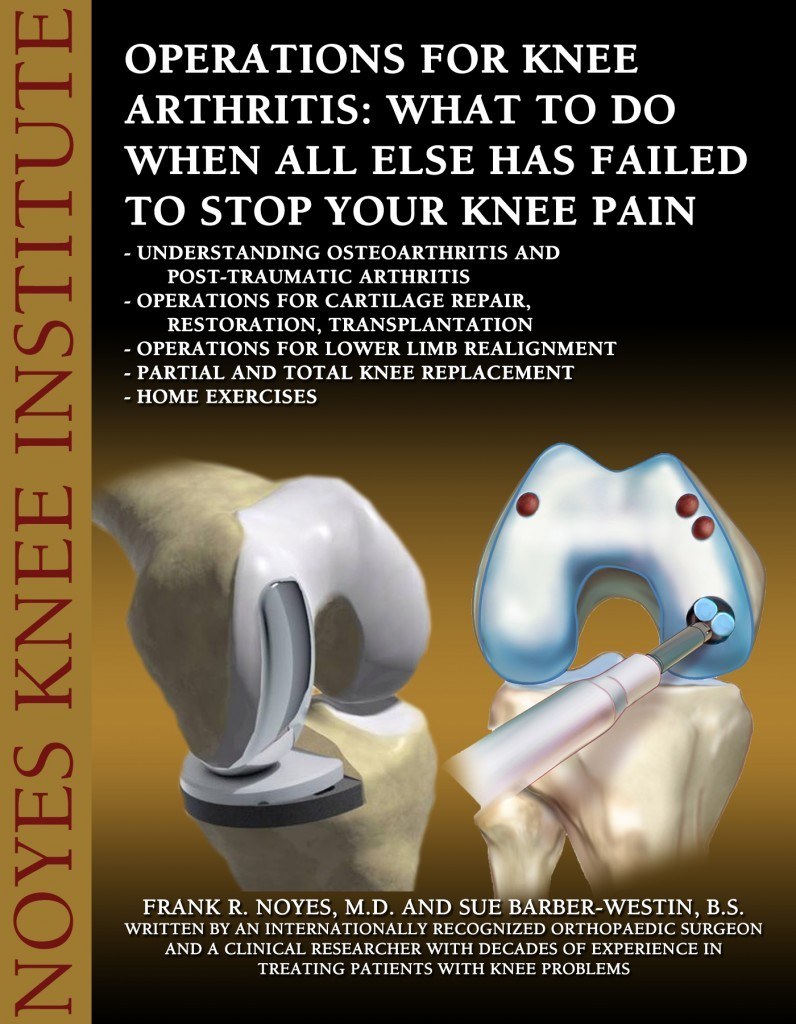Knee Surgery & Rehabilitation
Knee arthritis is a potentially devastating condition that affects millions of individuals and costs billions of dollars to treat in the United States alone. In general, knee arthritis involves the breakdown or degeneration of the joint lining (called articular cartilage) on the ends of the bones in the knee joint and may also involve loss of the normal amount of space between these bones.
E-Book Series Surgery for Knee Arthritis
Statistics on Arthritis
- In 2005, approximately 27 million adults in the U.S. had osteoarthritis (in either the knees, hips, hands, or spine).
- By 2030, the number of adults with arthritis is expected to increase to 67 million, most of who will have osteoarthritis.
- Nearly 2 in 3 people who are obese may develop symptomatic knee osteoarthritis in their lifetime.
- Costs from job-related osteoarthritis amount to $3.4 to $13.2 billion per year.
- 80% of patients with osteoarthritis have some amount of limitation of movement.
Frequently Asked Questions
Knee Arthritis What you need to know:
What are the risk factors for developing knee osteoarthritis?
- Genetics (family history)
- Excessive body weight
- Injury (fracture, ligament tear, meniscus tear, dislocation)
- Jobs that involve heavy manual labor, heavy lifting, repetitive knee bending
- Structural malalignment of the lower limb: bowed legs, knock-knees
- Untreated knee ligament tear (especially the anterior cruciate ligament)
- Removal of a large portion of a meniscus
- Muscle weakness, sedentary lifestyle
- Female gender, especially after age 50
- Age (risk increases with age)
- Possibly diabetes, underactive thyroid, Paget’s disease, avascular necrosis, gout, other crystalline abnormalities, and hemophilia.
What are the treatment options for knee osteoarthritis? How do I avoid surgery?
Conservative treatment is usually done first in patients who have knee arthritis in order to avoid surgery. There are many books and websites available that describe exercises, special diets, and medications (pills and injections) typically prescribed for osteoarthritis and post-traumatic arthritis.
At the Noyes Knee Institute, we have developed a specific treatment plan for knee arthritis based on how severe the condition is for each patient. This includes:
- Lifestyle changes such as weight loss and avoidance of activities that can aggravate the knee. Every pound of weight less reduces pressure on the knee by 4-6 pounds.
- Over-the-counter medications
- Prescription anti-inflammatory medications (narcotics are not used in our clinic)
- Injections (steroid or synthetic lubricant such as Synvisc): only recommended when anti-inflammatory medications, diet, and avoidance of aggravating activities are not effective
- Physical therapy
- Supplements
- “Knee-friendly” exercise programs that are effective in improving flexibility and strength, but do not aggravate knee pain
- Change of occupation or participation in sports may be recommended for severe arthritis pain
- Go to "Treating Arthritis Without Surgery" page
What are my options if conservative treatment fails?
Unfortunately, conservative methods do not always work to resolve pain, swelling, and limitations with sports or daily activities and surgery becomes necessary. This is especially true for patients who have lost a great deal of joint lining. There are no magical medications, diets, or cures to stimulate growth of normal cartilage in the knee joint. Cartilage does not have the ability to heal or repair itself and, once injured, the process of deterioration will gradually continue.
While most people think of total knee replacement as the operation used for knee arthritis, there are in fact many other options. This is because the amount of arthritis may be mild, moderate, or severe and may involve one portion of the knee joint or several areas. At the Noyes Knee Institute, the following operations are performed:
- Arthroscopic debridement, abrasion arthroplasty
- Osteochondral autograft transfer
- Autologous chondrocyte implantation
- High tibial osteotomy
- Femoral osteotomy
- Meniscus transplantation
- Unicompartment (partial) knee replacement
- Total knee replacement
Patients who sustained knee injuries may also require other operative procedures done at the same time, such as a knee ligament reconstruction or patellar realignment.

